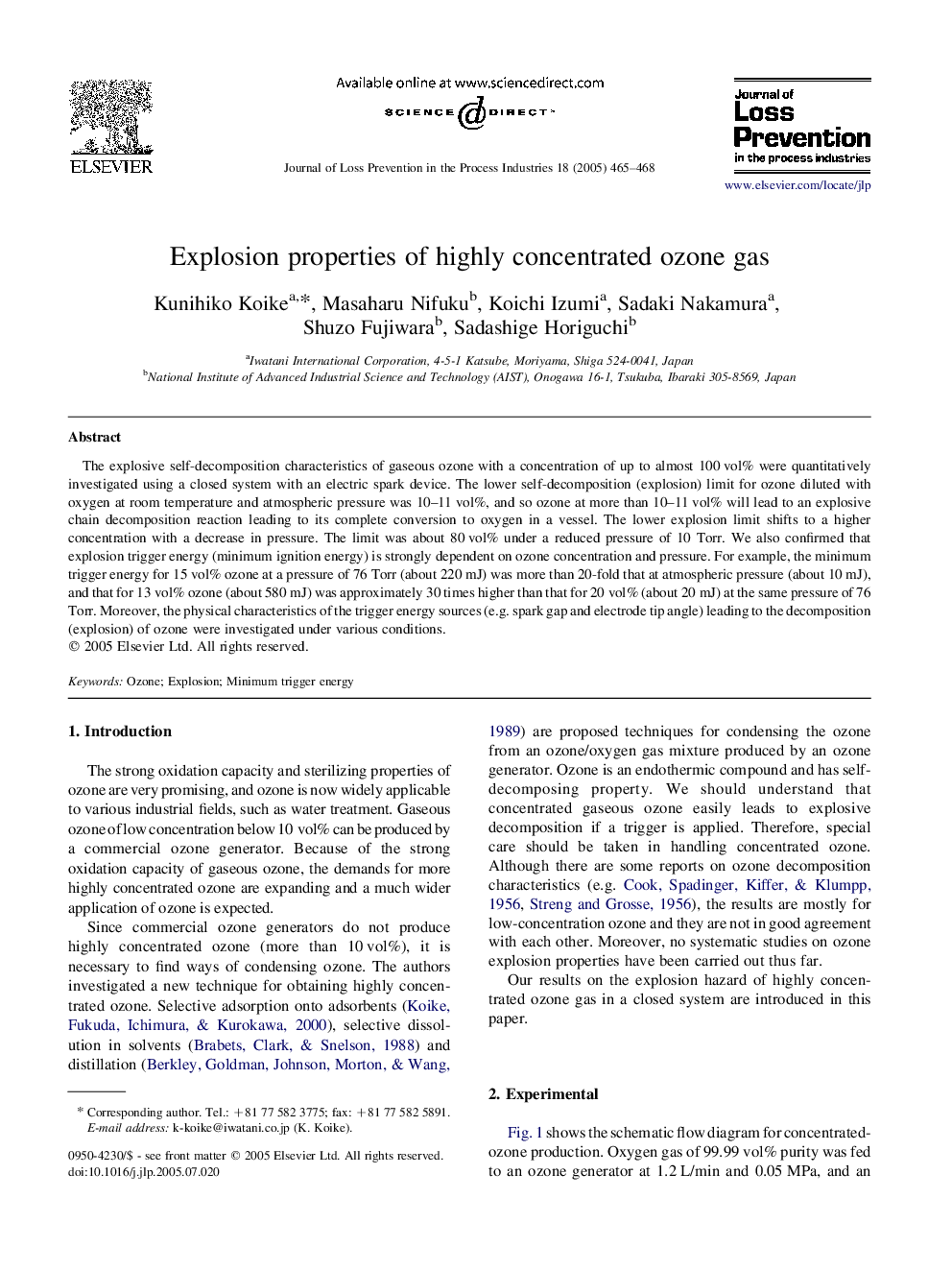| Article ID | Journal | Published Year | Pages | File Type |
|---|---|---|---|---|
| 9675129 | Journal of Loss Prevention in the Process Industries | 2005 | 4 Pages |
Abstract
The explosive self-decomposition characteristics of gaseous ozone with a concentration of up to almost 100Â vol% were quantitatively investigated using a closed system with an electric spark device. The lower self-decomposition (explosion) limit for ozone diluted with oxygen at room temperature and atmospheric pressure was 10-11Â vol%, and so ozone at more than 10-11Â vol% will lead to an explosive chain decomposition reaction leading to its complete conversion to oxygen in a vessel. The lower explosion limit shifts to a higher concentration with a decrease in pressure. The limit was about 80Â vol% under a reduced pressure of 10 Torr. We also confirmed that explosion trigger energy (minimum ignition energy) is strongly dependent on ozone concentration and pressure. For example, the minimum trigger energy for 15Â vol% ozone at a pressure of 76 Torr (about 220Â mJ) was more than 20-fold that at atmospheric pressure (about 10Â mJ), and that for 13Â vol% ozone (about 580Â mJ) was approximately 30 times higher than that for 20Â vol% (about 20Â mJ) at the same pressure of 76 Torr. Moreover, the physical characteristics of the trigger energy sources (e.g. spark gap and electrode tip angle) leading to the decomposition (explosion) of ozone were investigated under various conditions.
Related Topics
Physical Sciences and Engineering
Chemical Engineering
Chemical Health and Safety
Authors
Kunihiko Koike, Masaharu Nifuku, Koichi Izumi, Sadaki Nakamura, Shuzo Fujiwara, Sadashige Horiguchi,
